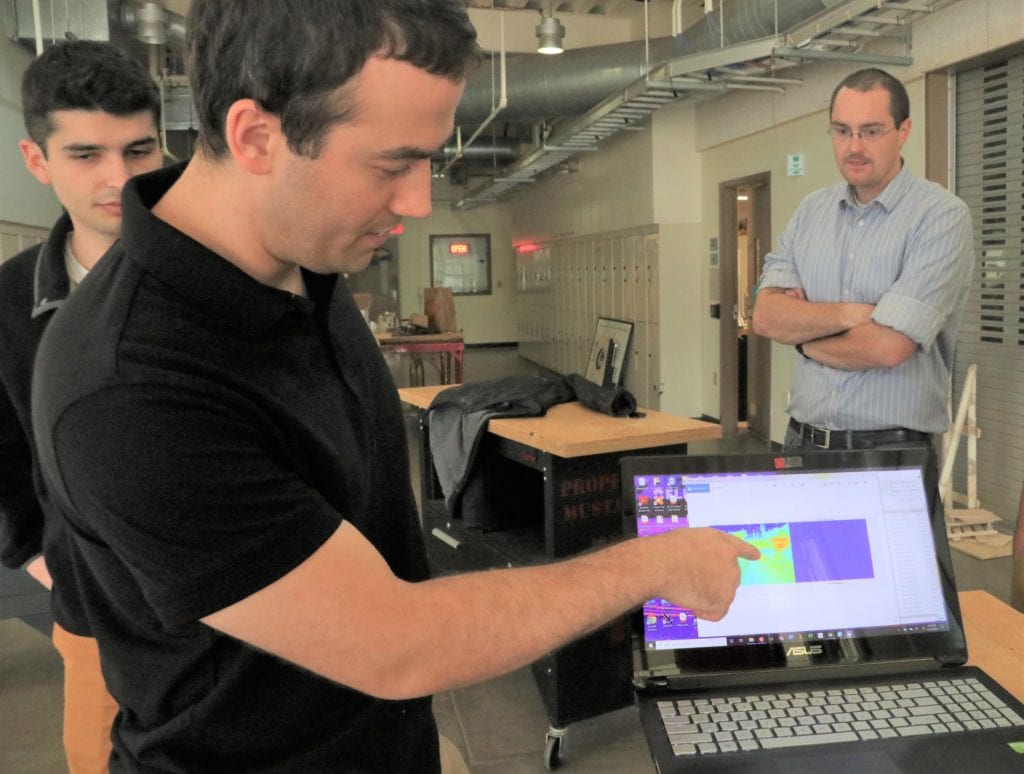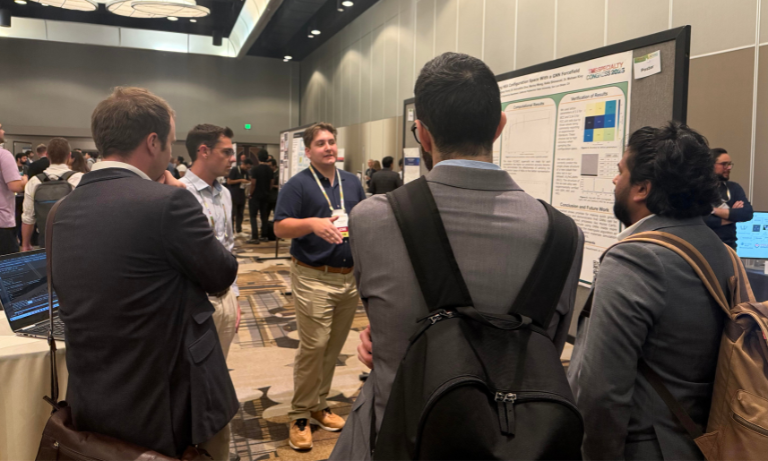A year after the deadliest wildfire in California history, a team of Cal Poly engineering students has created a robot that can detect burning embers and immediately extinguish them with water, potentially protecting residents and their homes.
“The dangers of a single ember or firebrand are incredible, as evidenced by the spark from a downed power line that caused the Camp Fire,” said Ryan Kissinger, a mechanical engineering senior. “With the right wind conditions, small embers can launch far beyond the heart of the wildfire, starting spot fires in neighboring areas.”
Project EMBER (Economical, mechatronic, burn-extinguishing robot) was one of more than 20 senior projects that were on display Friday, Nov. 22 during the Mechanical Engineering Department’s fall Project Expo.
The expo includes multiple projects focused on making life better for others, including a jogger designed for a 17-year-old disabled girl so she can go on runs with her father, an electronically cooled pillow for those who suffer from insomnia and a pedaling device that could generate power for Third World countries.
“Engineering students need to understand that their skills can help other people,” said Lee McFarland, a mechanical engineering lecturer and senior project advisor.
The disabled girl, Katie Robinson, has been interested in spending more outdoor time with her father since he began running and participating in half marathons four years ago. Yet, her father has not been able to find a jogger that’s the right size or style for Katie.

“She enjoys being outdoors, being active, and she is very adventurous,” said Edward Robinson, a middle school vice-principal in Fresno. “I know she will love running with me in her new jogger, and it will enhance her quality of life by actively competing in races and ‘earning her finisher’s medal’ just like dad, which she has been referencing a bit over the last several months.”
Katie was born with significant medical conditions and physical abnormalities, primarily involving her legs, feet, and the lack of muscle growth and development, her father said. She has some cognitive deficits as well.
Robinson learned about Cal Poly’s senior projects while reading about Team Joseph – Cal Poly students that have created multiple projects over the years for 25-year-old Joseph Cornelius, who has cerebral palsy. Different teams of engineering students have created three projects that enable Cornelius, of Los Osos, CA, to participate in triathlons with his father.
Once the jogger is delivered, Robinson said he plans to take Katie on a few 5K runs before participating in the California Classic Half Marathon in Fresno on April 6.
The EMBER project, meanwhile, was conceived by faculty members Richard Emberley and John Ridgely in response to the Camp Fire, which resulted in at least 85 fatalities in November, 2018.

Specifically, the project considered the impact of wildfire embers, which can travel miles in the wind and become large fires upon landing in or near residential areas.
“The issue is that homeowners only have two actions to defend their homes from wildfires,” Kissinger said. “One, staying home to put out potential fires with a hose, which is incredibly dangerous, or, two, leaving their neighborhood, hoping their houses can brave the spread of wildfires.”
The robot prototype his team created is a cylinder-shaped device that pivots with an encoder-controlled motor and uses a thermal camera called a Lepton to detect embers. Once it detects heat, the robot aims a spray nozzle and launches a wall of water up to 25 feet away.
The device checks to ensure the heat has been extinguished, then continues to patrol.
“Mechanical testing proves our concept to be effective,” Kissinger said.


